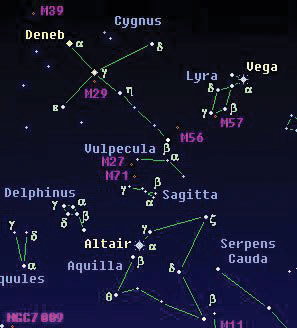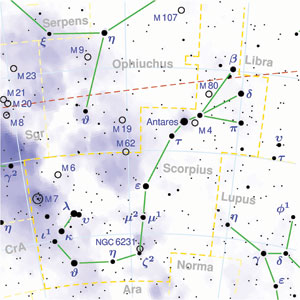BY CHRISTINA LUND

Summer is a great time of year for stargazing – the nights are cooler, the sky is clearer and there is hardly any rain. To see the stars and constellations, there is no need to go out and buy a telescope or even binoculars.
According to NASA’s “Ask an Astrophysicist,” there are many different stars that shine in the brightest in the summer sky, depending on your location and time of night. There are three prominent stars called “The Summer Triangle.”
- Vega. This bright bluish star is the highest of the three stars. It is the brightest star in the constellation Lyra, which is an ancient musical instrument.
- Altair. This star is located below and to the right of Vega. It is part of the constellation Aquila, which is an eagle.
- Deneb. The third star of the triangle, is situated below and to the left of Vega. This constellation represents a swan.
In the southern sky, Scorpius, which resembles a scorpion, can be found in the southern hemisphere, where the Milky Way meets the horizon. It lies between Libra
to the west and Sagittarius
to the east. The brightest star in this constellation is Antares. Antares is a reddish star that is the “heart” of the scorpion. The claws of Scorpius spread out in front of him to the right and the curving tail is behind him. Keep in mind, you will need dark skies to see enough of this constellation.
 Can you find the planets?
Can you find the planets?
There are two planets that might be the easiest to find, Mars and Venus. Mars, known as the “red planet,” can be found after sunset, above the horizon. Mars begins to brighten throughout the month of August, then fades in the fall. Venus, known as the “morning star,” can be seen in the eastern sky before sunrise, as well as the “evening star,” when seen in the western sky after sunset. Venus is the brightest star and is usually visible to the naked eye.
To learn more about the stars and constellations, or to make your very own star finder, visit NASA’s website at www.spaceplace.nasa.gov/starfinder/.






